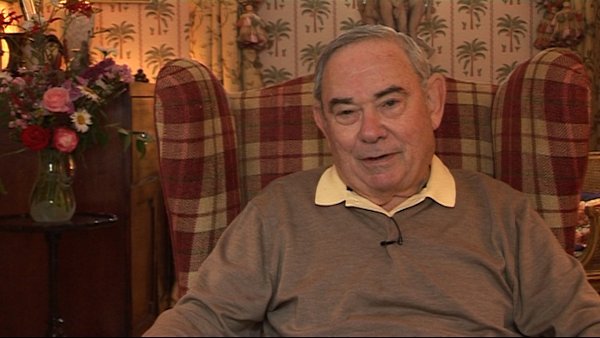NEXT STORY

Establishment of the biotechnology industry
RELATED STORIES

NEXT STORY

Establishment of the biotechnology industry
RELATED STORIES



It's very strange, because universities in the United States are in legal combat with the NIH [National Institutes of Health] constantly for issues involving overhead rates and all kinds of technical details about payment by the government for hundreds of different issues, whether it's legal or not, so they must file suit. So most universities who receive funds from the NIH always have one or a dozen suits against the government at any given time. They're not criminal... they're, you know, not criminal suits. This wasn't... this wasn't a criminal suit either, but when one person like myself brings suits against... brings a suit against the NIH, then you now know what can happen. There is an effort to cripple that person in one way or another, and they did make that effort, and I have the written evidence for it with the signatures of the attorneys on that memorandum. And this will be, as... I have referred to this... I have referred to this in print. It will soon appear in other materials and I'll talk about that later.
So now after... during the seven years of litigation, three critical events occurred. One... the first event was what's called the Chakrabarty decision of the Supreme Court of the United States. That decision was based on an issue raised by the... I believe it was the Monsanto chemical company, whose scientist, Chakrabarty, discovered a microorganism, a bacterium, that could digest oil and turn it into something that was nontoxic and not a danger to the environment by metabolising the oil. And obviously this was a very important organism that could be used when there were oil spills, etc., and so they wanted to patent it. But as I learnt in 1960, 15 or 20 years earlier, you cannot patent living things in the United States, and I doubt whether you could do it in other countries at that time, which is why WI-38 was distributed by me worldwide free to anybody who was qualified, who wanted it and to the... and to the pharmaceutical manufacturers who produce vaccines from which they made literally multiple hundreds of billions of dollars, which I can also document with no difficulty and from which I received, I think, one or two very nice dinners.
The Chakrabarty decision said, 'Yes, you can patent living things.' And that was a major breakthrough. It is the basis for all of the patents that have been going on for the past 20 or 30 years in respect of the biotechnology industry, for example. But WI-38 could not be patented because the legislation didn't exist then. So today, hundreds of cell populations like WI-38 are patented and people are making millions and millions of dollars from them.
Leonard Hayflick (b. 1928), the recipient of several research prizes and awards, including the 1991 Sandoz Prize for Gerontological Research, is known for his research in cell biology, virus vaccine development, and mycoplasmology. He also has studied the ageing process for more than thirty years. Hayflick is known for discovering that human cells divide for a limited number of times in vitro (refuting the contention by Alexis Carrel that normal body cells are immortal), which is known as the Hayflick limit, as well as developing the first normal human diploid cell strains for studies on human ageing and for research use throughout the world. He also made the first oral polio vaccine produced in a continuously propogated cell strain - work which contributed to significant virus vaccine development.
Title: The Chakrabarty decision and the patenting of life forms
Listeners: Christopher Sykes
Christopher Sykes is a London-based television producer and director who has made a number of documentary films for BBC TV, Channel 4 and PBS.
Tags: National Institutes of Health, Monsanto, Ananda Mohan Chakrabarty
Duration: 3 minutes, 59 seconds
Date story recorded: May 2013
Date story went live: 14 June 2013